Registration is now open for this year’s EuCheMS conference on nitrogen ligands – being held in Lisbon, September 4th – 7th. Find out more, with details for registration and abstract submission, at the website:
Registration is now open for this year’s EuCheMS conference on nitrogen ligands – being held in Lisbon, September 4th – 7th. Find out more, with details for registration and abstract submission, at the website:
The study of organometallic compounds continues to push the boundaries of coordination chemistry, exploring the bonding and electronic structures of metals in unusual oxidation states, developing new ligands with unique binding motifs, and offering insights into related fields such as catalysis, bioinorganic, and single molecule magnetism. Here are some of the highest cited papers on organometallic chemistry from Dalton Transactions in 2017.
Most Cited Articles:
This original research is off to a great start, as some of our most cited work these papers and communications are already being recognized by the organometallic chemistry community.
Alpesh K. Sharma, Hemant Joshi, Renu Bhaskar, Satyendra Kumara and Ajai K. Singh
Bifunctional colorimetric chemosensing of fluoride and cyanide ions by nickel-POCOP pincer receptors
María K. Salomón-Flores, Iván J. Bazany-Rodríguez, Diego Martínez-Otero, Marco A. García-Eleno, Jorge J. Guerra-García, David Morales-Morales and Alejandro Dorazco-González
Shaojin Gu, Jiehao Du, Jingjing Huang, Yun Guo, Ling Yang, Weilin Xu and Wanzhi Chen
Most Cited Reviews:
These Frontier and Perspective articles are receiving a lot of attention online, reviewing the advances and trends that are making waves in the organometallic chemistry community.
Qiaoqiao Teng and Han Vinh Huynh
| Dalton Trans., 2017,46, 614-627
DOI: 10.1039/C6DT04222H
The donor strengths of various mono- and bidentate ligands can be easily compared on a unified 13C NMR spectroscopic scale. |
Alkynyl-protected gold and gold–silver nanoclusters
Zhen Lei, Xian-Kai Wan, Shang-Fu Yuan, Jia-Qi Wanga and Quan-Ming Wang
| Dalton Trans., 2017,46, 628-631
DOI: 10.1039/C6DT03687B
The latest advances involving the use of copper(I)–NHC complexes as NHC transfer agents are described. |
Kotohiro Nomura and Xiaohua Hou
| Dalton Trans., 2017,46, 12-24
DOI: 10.1039/C6DT03757G
Synthesis of vanadium–alkylidene complexes and some reactions have been reviewed; highly active, thermally robust, cis specific ROMP of cyclic olefins has been attained by ligand modification in (imido)vanadium(V)–alkylidene catalysts. |
Submit your research or reviews on Organometallic Chemistry to Dalton Transactions – see our author guidelines for information on our article types or find out more about the advantages of publishing in a Royal Society of Chemistry journal.
Coordination Chemistry is one of the cornerstones of inorganic chemistry. Novel combinations of metals and ligands can reveal interesting features of both, and result in complexes with new reactivity and magnetic or spectroscopic properties. Here are some of the highest cited papers on coordination chemistry from Dalton Transactions in 2017.
Most Cited Articles:
This original research is off to a great start, as some of our most cited work these papers and communications are already being recognized by the coordination chemistry community.
Huili Ma, Lu Wang, Jinghuo Chen, Xuejing Zhang, Liang Wang, Na Xu, Guangming Yang and Peng Cheng
| Dalton Trans., 2017, 46, 3526-3534
DOI: 10.1039/C7DT00159B
A multi-responsive luminescent sensor for organic small-molecule pollutants and metal ions based on a metal–organic framework is reported. |
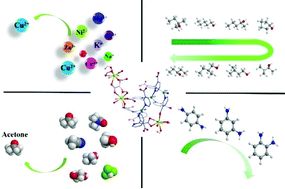 |
Muhammad Nadeem Akhtar, Yan-Cong Chen, Murad A. AlDamen and Ming-Liang Tong
Kun Zhang, Dan Liu, Veacheslav Vieru, Lei Hou, Bin Cui, Fu-Sheng Guo, Liviu F. Chibotaru and Yao-Yu Wang
Most Cited Reviews:
These Frontier and Perspective articles are receiving a lot of attention online, reviewing the advances and trends that are making waves in the coordination chemistry community.
Prasanta Kumar Mohapatra
| Dalton Trans., 2017, 46, 1730-1747
DOI: 10.1039/C6DT04898F
Studies on the extraction of actinide ions from radioactive wastes have great relevance in nuclear fuel cycle activities, mainly in the back end processes focused on reprocessing and waste management. |
Alkynyl-protected gold and gold–silver nanoclusters
Zhen Lei, Xian-Kai Wan, Shang-Fu Yuan, Jia-Qi Wanga and Quan-Ming Wang
| Dalton Trans., 2017, 46, 3427-3434
DOI: 10.1039/C6DT04763G
Alkynyl-protected coinage metal nanoclusters show new structural features and have interesting luminescence properties and catalytic behavior.
|
Firoz Shah Tuglak Khan, Tapas Guchhait, Sujit Sasmal and Sankar Prasad Rath
|
Dalton Trans., 2017, 46, 1012-1037 DOI: 10.1039/C6DT03829H
A brief account has been presented on how the inter-heme interactions in μ-hydroxo diiron(III) bisporphyrins and counter anions can induce significant change in the structure and properties including the iron spin state without affecting the overall topology.
|
Submit your research or reviews on Coordination Chemistry to Dalton Transactions – see our author guidelines for information on our article types or find out more about the advantages of publishing in a Royal Society of Chemistry journal.
Inorganic materials and nanoparticles are being applied to many of the most pressing challenges facing humanity in the 21st century. They are currently being investigated for their applications in batteries, solar cells, photocatalysts for water splitting and pollutant degradation, and medical theragnostics. Here are some of the most impactful papers in solid state inorganic chemistry from Dalton Transactions in 2017.
Most Downloaded Reviews:
These Frontier and Perspective articles are receiving a lot of attention online, reviewing the advances and trends that are making waves in the solid-state inorganic chemistry community.
Thioborates: potential nonlinear optical materials with rich structural chemistry
Yu-kun Lian, Li-Ming Wu and Ling Chen
Tomokazu Umeyama and Hiroshi Imahori
Yanmei Shi and Bin Zhang
Most Cited Articles:
This original research is off to a great start, as some of our most cited work these papers and communications are already being recognized by the nanomaterials and solid-state chemistry community.
Xiao-Ju Wen, Cheng-Gang Niu, Lei Zhang and Guang-Ming Zeng
| Dalton Trans., 2017, 46, 4982-4993
DOI: 10.1039/C7DT00106A
A novel BiOI/CeO2 photocatalyst with high photocatalytic performance was successfully synthesized via a facile in situ precipitation method. The enhanced photocatalytic performance is ascribed to the formation of a p–n junction, which promotes carrier separation. |
Lin Zhou, Kai Yu, Fan Yang, Jun Zheng, Yuhua Zuo, Chuanbo Li, Buwen Cheng and Qiming Wang
| Dalton Trans., 2017, 46, 1766-1769
DOI: 10.1039/C6DT04758K
Herein, we evaluated an all-inorganic perovskite based MSM photodetector employing a bilayer composite film of mp-TiO2 and CsPbBr3 quantum dots as a photosensitizer.
|
Na2.32Co1.84(SO4)3 as a new member of the alluaudite family of high-voltage sodium battery cathodes
Debasmita Dwibedi, Ritambhara Gond, Allumolu Dayamani, Rafael B. Araujo, Sudip Chakraborty, Rajeev Ahuja and Prabeer Barpanda
| Dalton Trans., 2017,46, 55-63
DOI: 10.1039/C6DT03767D
A novel alluaudite, Na2+2xCo2−x(SO4)3, has been unveiled as a potential high-voltage (ca. 4.8–5.8 V) sodium battery cathode demonstrating antiferromagnetic ordering.
|
Submit your research or reviews on Solid State Inorganic Chemistry and Nanomaterials to Dalton Transactions – see our author guidelines for information on our article types or find out more about the advantages of publishing in a Royal Society of Chemistry journal.
It is that time again when we take a look back at the work published in the previous year and how it is being received by the Inorganic Chemistry community. These Perspective and Frontier articles are among our top cited and downloaded review articles of 2017 providing valuable insight into the latest advances and trends for the community.
The full list of Perspective and Frontier articles published in 2017 can be found here.
|
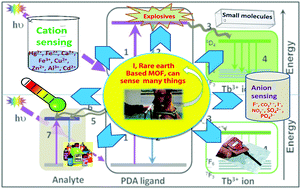 |
|
| Functional metallosupramolecular architectures using 1,2,3-triazole ligands: it’s as easy as 1,2,3 “click”
Roan A. S. Vasdev, Dan Preston and James D. Crowley Dalton Trans., 2017,46, 2402-2414 Self-assembled metallosupramolecular architectures generated using “click” ligands have become an increasingly popular area of inorganic chemistry. |
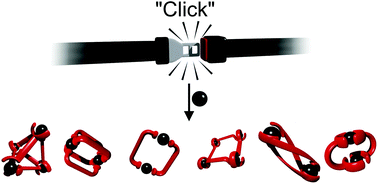 |
|
| Alkynyl-protected gold and gold–silver nanoclusters
Zhen Lei, Xian-Kai Wan, Shang-Fu Yuan, Jia-Qi Wang and Quan-Ming Wang Dalton Trans., 2017,46, 3427-3434 Alkynyl-protected coinage metal nanoclusters show new structural features and have interesting luminescence properties and catalytic behavior. |
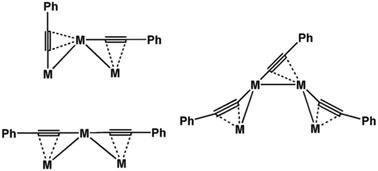 |
|
| Copper(I)–NHC complexes as NHC transfer agents
Fady Nahra, Alberto Gómez-Herrera and Catherine S. J. Cazin Dalton Trans., 2017,46, 628-631 The latest advances involving the use of copper(I)–NHC complexes as NHC transfer agents are described. |
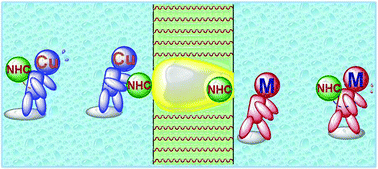 |
|
| Generalization of the Tolman electronic parameter: the metal–ligand electronic parameter and the intrinsic strength of the metal–ligand bond
Dieter Cremer and Elfi Kraka Dalton Trans., 2017,46, 8323-8338 Dieter Cremer and Elfi Kraka The MLEP is a new, generally applicable measure of the metal–ligand bond strength based on vibrational spectroscopy, replacing the TEP. |
|
|
| β-Diketiminate complexes of the first row transition metals: applications in catalysis
R.L. Webster Dalton Trans., 2017,46, 4483-4498 Although β-diketiminate complexes have been widely explored in stoichiometric studies, their use as catalysts is largely underdeveloped. |
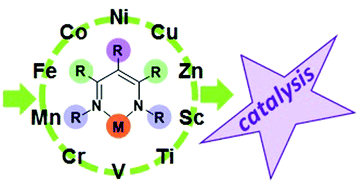 |
These articles are free to view until 15th February 2018
Submit your research or reviews to Dalton Transactions– see our author guidelines for information on our article types or find out more about the advantages of publishing in a Royal Society of Chemistry journal.
This year’s International Conference on Coordination Chemistry (ICCC2018) is being held in Sendai, Japan, from July 30th – August 4th and features a ‘Rising Stars’ session aimed at PhD students and early career researchers. If you, or someone you know, is a Rising Star in Coordination Chemistry see the flyer below for further details.
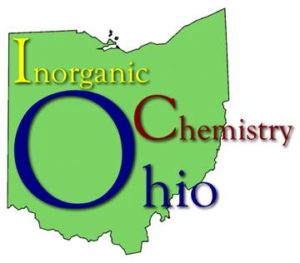 |
Last month saw the occasion of the Ohio Inorganic Weekend (OIW), which brings together researchers of inorganic chemistry from across the Midwest. Organised and hosted by Dr Hannah Shafaat (Ohio State University) and featuring 20 oral presentations and 119 posters on a diverse range of topics, including catalysis, organometallic and bioinorganic chemistry, and solid-state materials, the event was a huge success. The relaxed setting enabled undergraduate and graduate students to present and discuss their work, frequently for the first time outside their home institution, and provided an excellent venue for initiating collaborations. The RSC was on-hand to award poster prizes to the best student poster presentations.
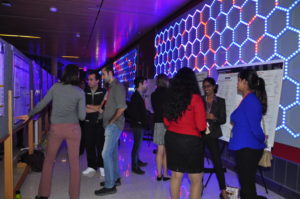
The Prize winners were:
1st Place – Desislava Dikova (University of Michigan)
“Investigations into sensitizing GaP photocathodes with CdSe quantum dots“
2nd Place – Arden Hammer (Oberlin College)
“Ligand Shape Directs the Symmetry of Extended Inorganic Motifs in Lead Oxide Naphthoates“
3rd Place (Joint) – Julian Sobieski (Kent State University)
“Assessing Steric Bulk of Protecting Groups and Bidentate Ligands via a Computational Determination of Exact Cone Angle (θo) and Exact Solid Angle (Θo)“
3rd Place (Joint) – Zach Smith (The Ohio State University)
“Spectroscopic Investigations of the Novel Mn/Fe Ligand Binding Oxidases“
4th Place – Jenna Bouquot (Kenyon College)
“Synthesis of γ-(2-bromo-2-methylpropionyl)-ɛ-caprolactone and polymerization using a pseudo-alumatrane catalyst“
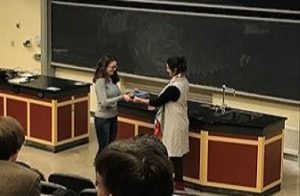 |
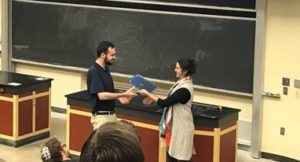 |
|||
| Desislava Dikova (left) receiving her prize from Dr Shafaat (right) | Zachary Smith (left) receiving his prize from Dr Shafaat (right) |
For more information about the OIW, including a full list of presentations and pictures of the poster session visit the conference page on the Shafaat Research Group website.
Dalton Transactions offers a huge congratulations to all poster prize winners!
Dalton Transactions awarded Daniel Delony (University Göttingen) and Malte Fischer (University Oldenburg) poster prizes for their work at the 20th North German Doctoral Colloquium 2017 (Norddeutsches Doktoranden kolloquium 2017) which took place in Kiel, Germany from the 21st – 22nd September 2017.
The event aims to promote a productive exchange of ideas through lectures and poster presentations among the doctoral students from the Inorganic Chemistry working groups. Current research such as bioinorganic chemistry, organometallic and inorganic synthesis and catalysis are discussed as well as the fields of inorganic solid-state chemistry and materials science.
Further information about the conference can be found by visiting the webpage.
Earlier this year the 39th international meeting of the French Speaking Mössbauer Society (Groupe Francophone De Spectrométrie Mössbauer) was held in Béni-Mellal, Morocco. The conference was organized by Prof. Mohammed Sajieddine from the University Sultan Moulay Slimane and gathered 78 participants with 42 contributions (15 talks and 27 posters) including Invited speakers Prof. Hiroki Oshio (Univ. of Tsukuba), Prof. Abdelilah Benyoussef (Acad. Hassan II Sci. Techniques, Rabat, Morocco), Dr. Moulay Tahar Sougrati (Univ. Montpellier II, France) and Prof. Stanislaw Mieczyslaw Dubiel (AGH Univ. Sci. Tech., Krakow, Poland).
The meeting was centered on the input of Mössbauer spectroscopy in solid state chemistry and physics with a special emphasis on nanomaterials and current trends and applications of the technique. Delegates came from France, Belgium, Portugal, Tunisia, Algeria, Morocco, and Ivory Coast. A Mössbauer school was organized prior to the conference with invited lecturers Dr. Jean Marc Grenèche (Le Mans Univ.), Dr. Mustapha Abdelmoula (Univ. of Lorraine) and Dr. Jean Juraszek (Univ. of Rouen).
The event, which was held for the first time in North Africa, was a great success. It gathered scientists either using or interested in the Mössbauer technique to discuss the latest trends and advances. The GFSM, chaired by Prof. Yann Garcia (Université catholique de Louvain, Belgium), organizes this meeting every year. Previously the meeting has been held at Le Mans (2016), Jülich (2015), Montpellier (2014), Nancy (2013), Rouen (2012), Strasbourg (2011) and Lisbon (2010).
Out of the numerous posters, the GFSM 2017 poster prize (150 €) was awarded to Mohammed Ounacer (University Sultan Moulay Slimane) from the group of Prof. Mohammed Sajieddine. The Dalton Transactions prize was awarded to Houria Benaissa (Université catholique de Louvain) from the group of Prof. Yann Garcia, on thermal sensors based on 4H-1,2,4-triazole derivatives. This later prize was delivered by Prof. Hiroki Oshio (Dalton Transactions advisory board member).
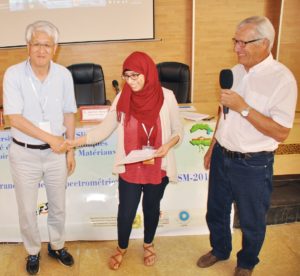 |
||
| Houria Benaissa (centre) receiving her award from Dalton Transactions advisory board member Hiroki Oshio (left) and Jean-Claude Jumas (right) |
A GFSM 2017 thesis prize (300 €) was also delivered to Siham Difi (Montpellier and Marrakech) by Dr. Jean-Claude Jumas (Montpellier, poster committee chairman).
Dalton Transactions offers a huge congratulations to all the prize winners!
Earlier this year the 67th conference of the Japan Society of Coordination Chemistry (JSCC) was held at Hokkaido University, co-organised by The Chemical Society of Japan (CSJ). Including both fundamental and applied work on synthesis and properties of coordination compounds, encompassing organometallics and bioinorganic chemistry, the event was a huge success with over 1000 attendees. More than 150 talks, in English and in Japanese, were given over three days, including Award Lectures by world-renowned academics, including Omar M. Yaghi (University of California, Berkeley), Yoshiaki Nishibayashi (University of Toyko), Jian-Ren Shen (Okayama University), and Erwin Reisner (University of Cambridge).
A number of presentation slots were also allocated to students, and the RSC was on-hand to offer poster prizes. This marks the eighth year running that Dalton Transactions and CrystEngComm have awarded prizes at this event, and this year also saw the presentation of the inaugural Inorganic Chemistry Frontiers awards. Out of a total of 460 poster presentations, the award winners were:
The winners were given an RSC heat-sensitive mug as seen in the photo above of Yoshiyuke Takemoto – who we hope doesn’t drink coffee while using that solvent drying system!
The RSC offers its hearty congratulations to all the winners!